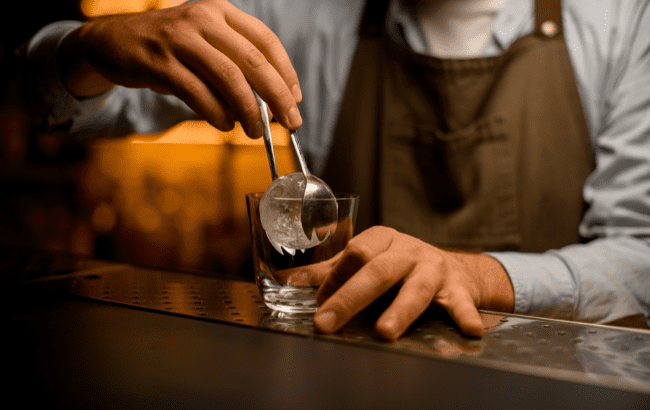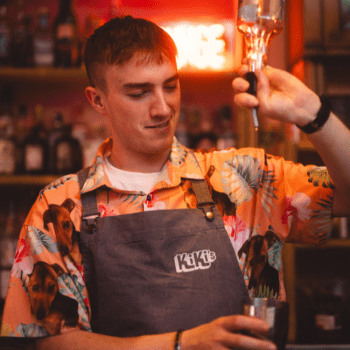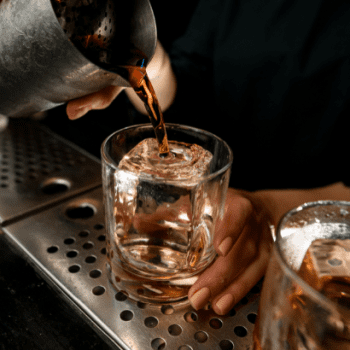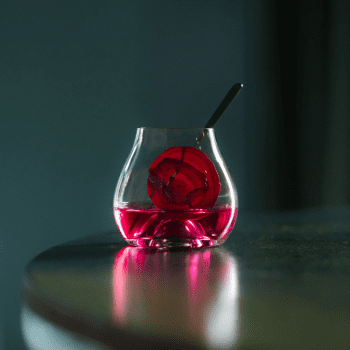Is the on-trade Ice Age coming to an end?
By Lauren BowesMost bars rely on ice to cool their drinks, but some are starting to fight back against the idea that it is necessary. We meet the cool customers who are changing the way they chill their drinks, saving cash, and cutting back on waste in the process.

*This feature was originally published in the February 2025 issue of The Spirits Business magazine.
For a cocktail bar, ice is pretty much non‐negotiable. Whether a hefty serving of crushed ice to create a Mojito, a huge cube of clear ice in a Negroni, or simply the regular cubes used when shaking a Sour, it plays a pivotal role in nearly every classic serve.
Clear ice has become a staple in most upmarket bars – it not only looks cool, but it also melts more slowly than regular ice, minimising dilution. However, sourcing it was a problem for Kiki Lounge, a bar in the Isle of Man. The majority of UK bars buy their clear ice cubes from a supplier – but there is no such supplier on the Isle of Man, which gets much of its produce shipped in.
“The problem with ice is that it’s a very cheap commodity, but it’s very heavy,” explains Kiki Lounge co‐founder Drew Fleming. “You don’t pay shipping on what the item is – you pay on what it weighs and how much space it takes up.” As well as the price, shipping something of that size is massively unsustainable.

Luckily for Kiki Lounge, Fleming was invited to a wedding that had a clear‐ice statue. Determined to discover how it was made, he stuck by the statue until its maker arrived to collect it. Now, the hobbyist ice sculptor provides clear ice blocks to the bar, with Fleming spending an evening every week hand‐cutting the blocks into cubes.
Impact of choice
Bars in major cities such as New York have a wealth of ice options at their fingertips, so most won’t pause to consider the impact of their choices. At Sip & Guzzle, however, Ben Yabrow is doing his best to make a difference. “Water is becoming an increasingly scarce resource around the world, and bartenders are noticing,” he says. “At Sip, we don’t use machine ice. Everything is hand‐cut; even what we shake on. This way, rather than burning ice at the end of service, we just put it back in the freezer for the next day.”
A supplier delivers Sip’s ice in blocks, with the team hand‐cutting large ‘diamonds’ for drinks served in rocks glasses. The shavings are used to fill the bar wells, which keep bottles cold during service. The bar also receives ice ‘spears’, which the team use for shaking and stirring cocktails. For extra sustainability points, where possible, this ice is rinsed off after stirring, melting the outer layer and removing any cocktail residue, and will be used again, provided there are no allergens in the drink.
It might sound like a lot of work, but there are easy tips bars can take from this – for instance, taking steps to avoid ‘burning’ masses of ice at the end of service. Sip’s decision to implement hand‐cutting isn’t necessarily a more sustainable choice than buying in the desired shapes, but it encourages the team to think of ice as a finite resource that shouldn’t be wasted.
Is it possible to do away with ice altogether? Bar de Vie, which opened in Paris in March, has done just that. Its co‐founders, Barney O’Kane and Alex Francis, spent five years at Little Red Door, but opening their own bar is an opportunity to start from scratch and implement their own ideas – one of which is eliminating ice. “The idea of having a ‘no ice’ programme isn’t a new idea at all,” explains Francis, pointing to predecessors including Ryan Chetiyawardana’s original bar, White Lyan, which opened in 2013.

Wildly unsustainable
Rather than considering the challenges of not using ice, Francis and O’Kane focus on the benefits. “It’s wildly unsustainable, whether you’re talking about clear ice or just machine ice,” he says. “Commercial ice makers are horribly inefficient when it comes to water management – they use something like 10 litres of water for every litre of ice created.”
Francis adds that ice makers are regularly the reason why bars fail food‐safety tests: “They’re never as clean as they’re meant to be. They’re a nightmare to look after. They break constantly.” O’Kane adds: “One thing bartenders hate doing is burning their ice well at the end of the shift – not because they see it as a waste, just the labour of it – and also chasing an ice‐machine repair person.”
Clear ice can be less wasteful than machine ice, as its production is controlled, but the transport and need for food‐safe packaging bring other sustainability downfalls. One benefit of clear ice – its ability to stay frozen for longer – could be seen as a negative too: any water that remains frozen after a guest has finished their drink becomes waste.
So, decision made, it was time to finally face those challenges. “You lose the flexibility that ice gives you,” explains Francis, with drinks needed to be batched, diluted, and chilled in advance. However, this wasn’t much of a challenge for the duo, who have been making drinks this way for years. “You can’t do tasting menu‐style drinks to that scale consistently and use ice. Personally, I haven’t worked in a bar for more than 10 years where almost every single ingredient isn’t batched.” The only difference is other bars dilute their pre‐batched ingredients by shaking or stirring with ice, while Bar de Vie dilutes them with water and stores them in the fridge.

What if a guest wants to order off menu, or would like a simple mixed drink such as a G&T? These are challenges already raised by other parts of Bar de Vie’s ethos. The bar only stocks seasonal, French‐made products, so anyone ordering a Margarita in winter will be let down by the lack of Tequila and lime juice before ice comes into the conversation.
“The way we view it, we’re going to spend most of our time on what we sell,” explains Francis. “We’ve never worked in venues where people come in with an expectation of ordering classic cocktails. They’re almost always ordering from our offering. The number of times that happens is small, so we don’t lose sleep over it.”
Instead, the duo are focusing on innovative solutions, including creating bespoke glassware that helps with cooling. For Highballs, the bar has ceramic cups with a pillar in the centre, similar to a whisky stone, but part of the cup. Its other glassware is smaller than typical glasses, making up for the space created by missing ice.
“For classics, we batch as many we can think of in a recipe that we feel is reflective of our ethos,” says Francis, adding that Bar de Vie’s style is different from bars like Harry’s or Schofield’s, which would be expected to be shaking classics on demand. He adds: “It’s like if you were to go into an Italian pizzeria and ask for sushi, you’re not going to have a great experience.”
Elsewhere in the on-trade, the debate as to whether ice should be served in wine rages on.
Related news
Desi Daru features at Sushisamba
